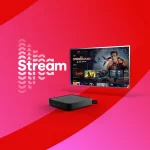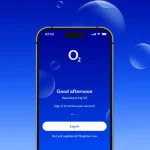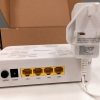UK Scientists Push 10.5Gbps Over Micron Sized LED Light Bulb Network

A team of UK scientists working on the £4.6m Ultra-Parallel Visible Light Communications (UP-VLC) project have successfully enhanced Light Fidelity (Li-Fi) technology so that a micro-LED (Light-Emitting Diode) light bulb can now transmit data at a record speed of 10.5Gbps (Gigabits per second).
The feat represents a significant improvement over a similar project conducted by researchers working at the Fraunhofer Heinrich Hertz Institute in Berlin (Germany), which in April this year confirmed that they had used standard “off-the-shelf” LED room lights to transmit data at speeds of up to 3Gbps (here).
Advertisement
As with the other LED based networking projects the UP-VLC team, which is led by Professor M.D. Dawson of the University of Strathclyde, achieved its record speed of 10.5Gbps by causing the micron sized light bulb to flash incredibly fast (millions of changes in light intensity per second) and this is further improved by turning each of the lights three primary colours (red, green and blue) into separate data channels (Orthogonal Frequency Divisional Multiplexing). In other words each of the three colours could send data at speeds of 3.5Gbps.
UP-VLC Statement
“This new technology has, in our view, the potential to combine information display, lighting and high-bandwidth communications in a single system (Fig. 1), leading to “universal illumination sources”, the full implications of which promise to be particularly profound. Disruptive developments can be anticipated to result, in areas including machine-to-machine communications, smart homes and vehicles, computation and data centres, smart clothing, mobile communications, imaging systems, personal security and healthcare.”
The micro-LED approach was first pioneered by the University of Strathclyde in Scotland earlier this year (here) and it has a number of advantages, such as being small enough that you could easily build them into everything from desktop monitors to smartphones. The tiny LEDs are particularly useful because they can flicker on and off around 1,000 times quicker than the larger and more traditional LEDs, which means better communication speeds.
In the real-world environment this would make a Li-Fi network much faster and more secure than WiFi, although that’s not to say there wouldn’t be problems. The visible light part of the electromagnetic spectrum might be significantly bigger than the traditional radio spectrum (masses of capacity) but it can’t penetrate through solid walls and thus you’d need transceivers / repeaters all over the place to make it viable around a home. People walking in front of the transmitters would similarly break the link.
The current project is due to end in September 2016 but with progress this rapid it would be hard to predict how things might develop over the next few years. One thing is sure, it’ll probably get faster.
Advertisement
Mark is a professional technology writer, IT consultant and computer engineer from Dorset (England), he also founded ISPreview in 1999 and enjoys analysing the latest telecoms and broadband developments. Find me on X (Twitter), Mastodon, Facebook, BlueSky, Threads.net and Linkedin.
« UPD UK Gov Creates Confusion Over BT and BDUK Broadband Coverage Data





















































Comments are closed